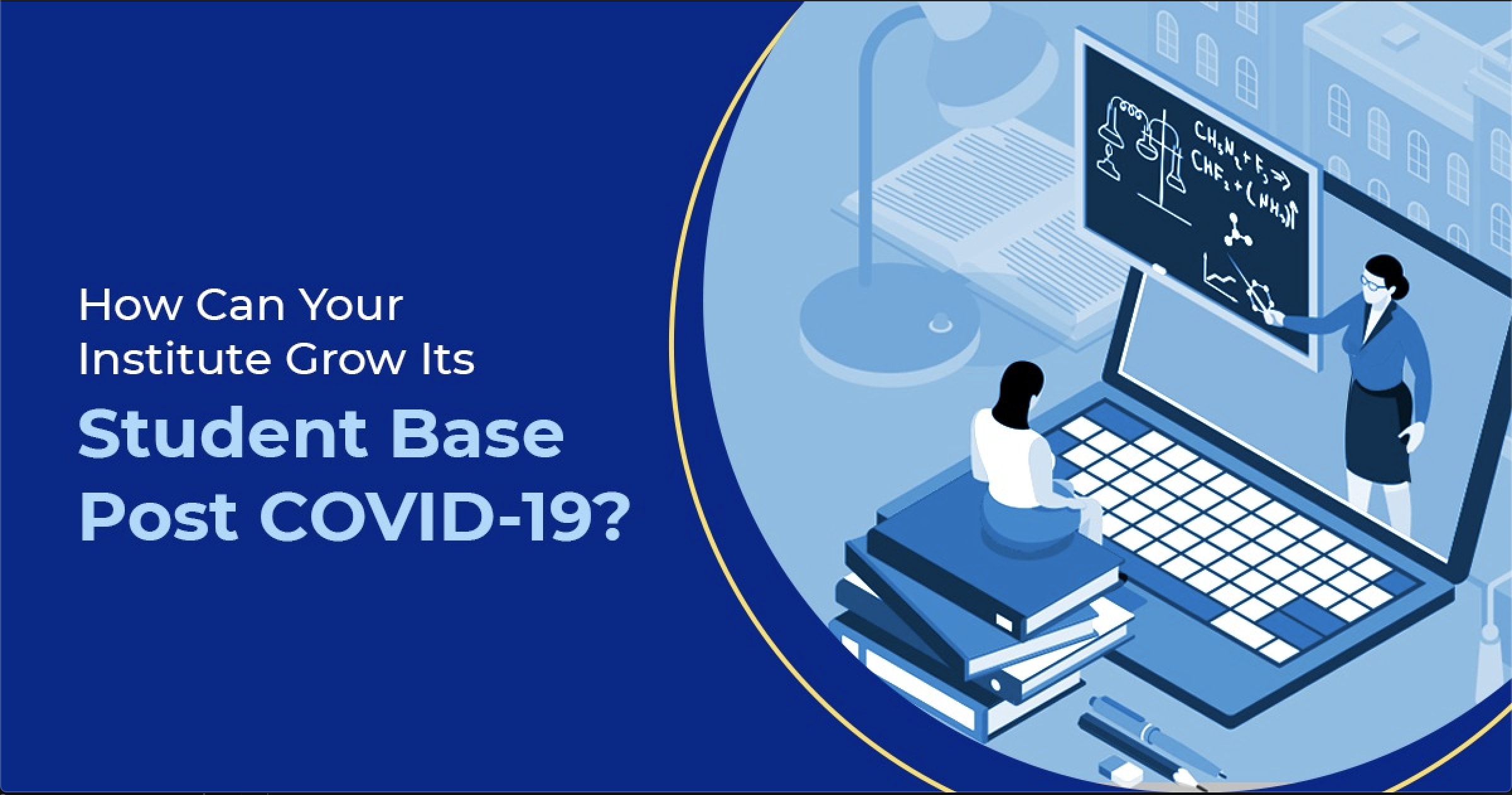
With entrance exams postponed and uncertainty about the coming academic year, the COVID-19 has shifted the nature of coaching classes. Institutes are seeing a fall in admissions and reduced budgets due to lower admission rate. Smaller players even need to fear the large online competitors crowding them out. Clearly, ed-tech is in high demand as the education sector experiences rapid digital transformation. Yet, the bottom line is this: how can coaching institutes grow their student base?
In this uncertainty, coaching institutes are reaching out to parents reluctant to send wards to classrooms. Due to significant demand for digital education, many online learning platforms are offering free access to their services. For example, BYJU’S, a Bangalore-based company, is now one of the world’s most highly valued edtech companies. They managed to establish this dominance because they switched to the digital medium as early as 2015. Since announcing free live classes on its Think and Learn app, BYJU’s has seen a 200% increase in the number of new students using its product. Similarly, in China, Tencent Classroom has been extensively used since mid-February. This platform saw the largest digital transformation process, with approximately 81% of K-12 students attending classes via the Tencent K-12 Online School.
With the COVID-19 pandemic increasing the need for an avenue for students to avail tuitions from home, coaching institutes should invest in technologies to ensure they can meet the digital demand. In this article, the Ken42 team outlines some such digital strategies that centres can leverage to grow their student base post COVID-19.
Understanding Content:
While undertaking marketing activities is a given, coaching institutes should focus on niche marketing techniques to engage with their target audience. Namely, they should focus on content marketing. To start with, your institute should perform a thorough content audit to find education gaps. Then, use educational content ideas that are engaging and useful to your audience to fill the information gap. Even this process can be automated- you can fuel your content with marketing automation to deliver the right content to the customer.
As your institute goes digital, it is also important to generate digital content. Indeed, to reach both your existing and potential audience, increasing your digital footprint will be key. For example, the aforementioned Tencent Classroom is now getting ready to upgrade its content delivery platform and come out with a second web version with improved content management and delivery.
Another advantage of digital platforms is the option of increased focus on personalisation. This is extremely useful for coaching institutes. That is, for even a batch size of 200 students, your institute can provide the same attention that students would have received in a batch of 5-10 students. This is because institutes can now tailor content to each individual student based on their academic level, all through technology and minimum manual effort.
Understanding Sales and Marketing Tools:
Going online means that your institute now has access to a range of digital tools. Through this, you should leverage your marketing automation platform. Through technology, you can look at your contact database and use your marketing automation platform-- such as Salesforce HEDA-- to improve your lead generation. With Higher Education Data Architecture (HEDA), your institute has a flexible, scalable and customizable architecture that allows you to configure Salesforce for your needs. HEDA puts your student at the center of every interaction, which is of extreme importance while dealing with stakeholders. Furthermore, HEDA allows you to access a student’s professors, advisors, parents, coaches, etc. from a single view. It also lets you see everything a student is interested in by the accounts they’re affiliated with, allowing you to tailor your marketing.
Using digital tools, you can nurture users through lead scoring. While lead scoring is usually used to score new prospects, you can use it to send relevant content about additional services or products to determine which clients are engaging with your content. Another important use of digital tools is to re-engage inactive customers. Through any marketing automation platform, you can identify if a potential user has not engaged with your campaigns, and then execute a retarget technique. Retargeting can include providing free trials and early access to a new product. This will help widen your student base with consumers you know are already somewhat interested in your institute.
For example, let us look at SCOUTS New Zealand, the country’s largest non-formal education provider. By leveraging Salesforce’s Community Cloud, Chatter and LearnTrac, they invited 13,000 Scouts to stay connected and to deliver programs. Scouts will be able to interact with each other using chat and live polls and have fun earning badges. This solution also allows scouts to structure their own learning and focus on their topics of choice. This success story should motivate coaching institutes to also adopt digital tools which will enable them to stay connected with existing students, while also reaching out to potential customers.
It is clear that this pandemic has disrupted the traditional education system. Instead of looking at this as a setback, however, coaching institutes should use this as an opportunity to stop focusing on traditional academic skills and rote learning. Instead, they should use digital tools to promote skills such as critical thinking and adaptability. Indeed, marketing efforts should emphasise that moving online is creating a new, more effective method of educating students. Coaching institutes can work to grow their customer base and achieve success through digital transformation.
Is your institute looking to go online? Reach out to Ken42, an edtech platform catering to your institute’s evolving needs through an end-to-end digital solution.